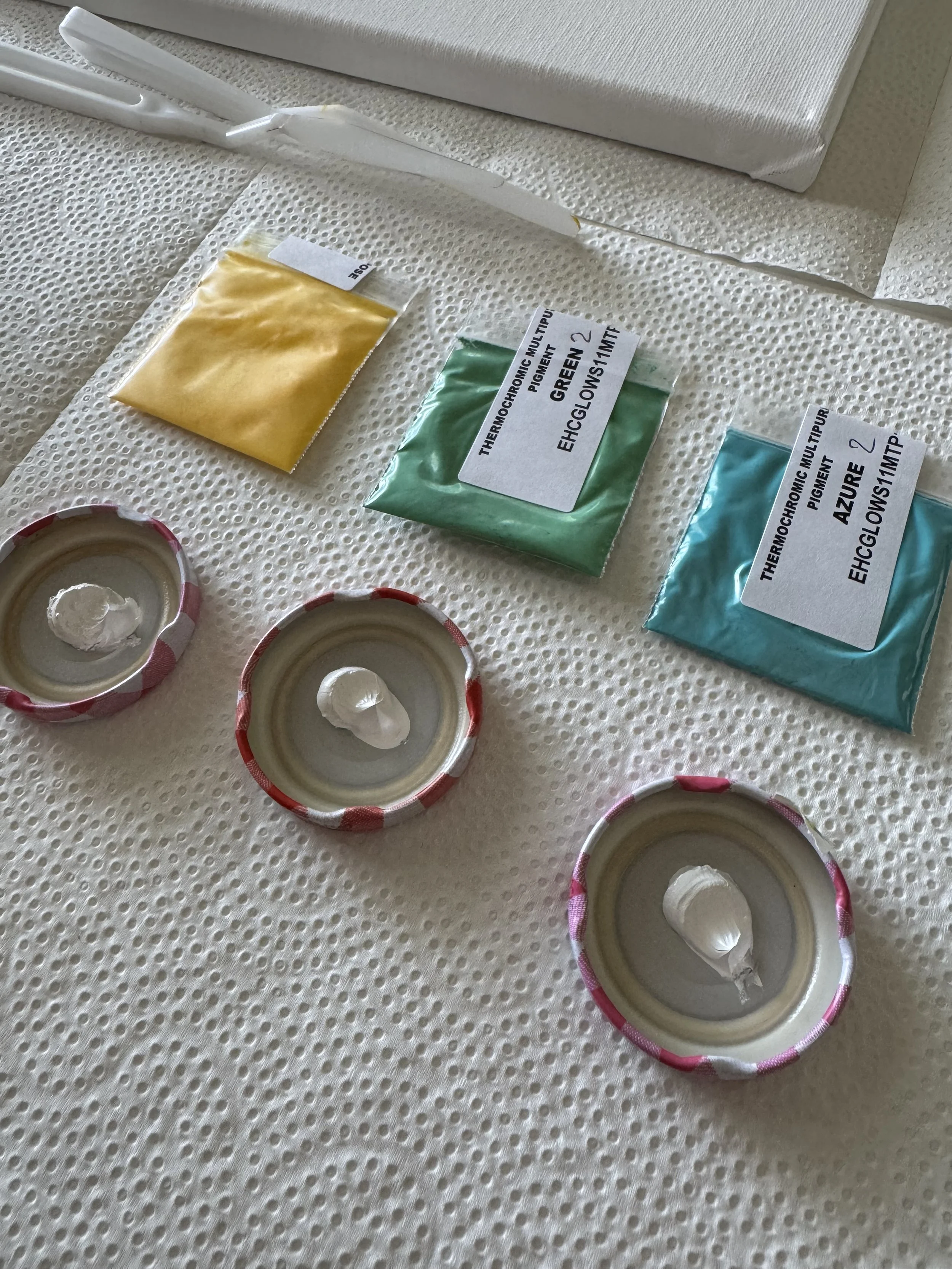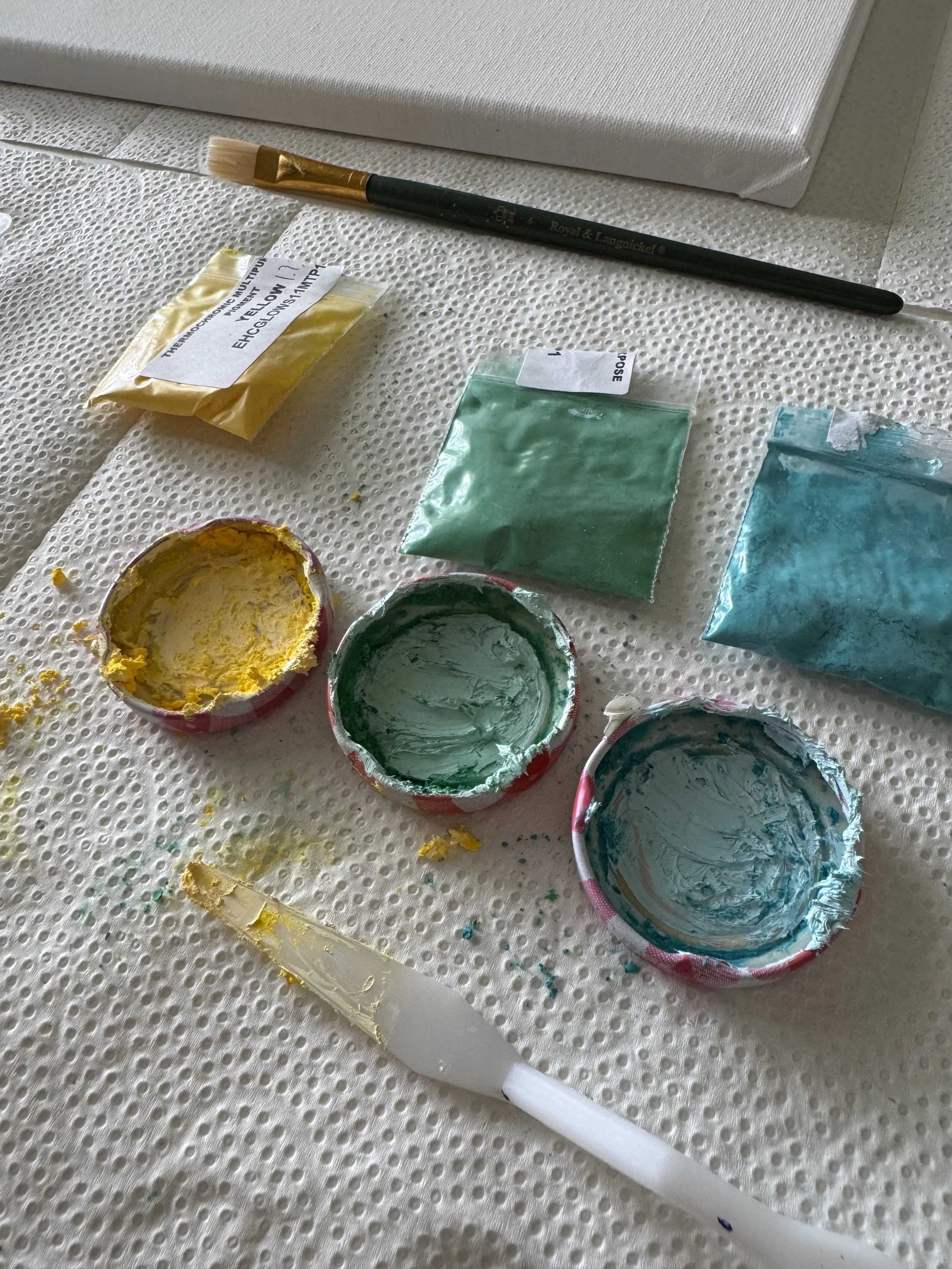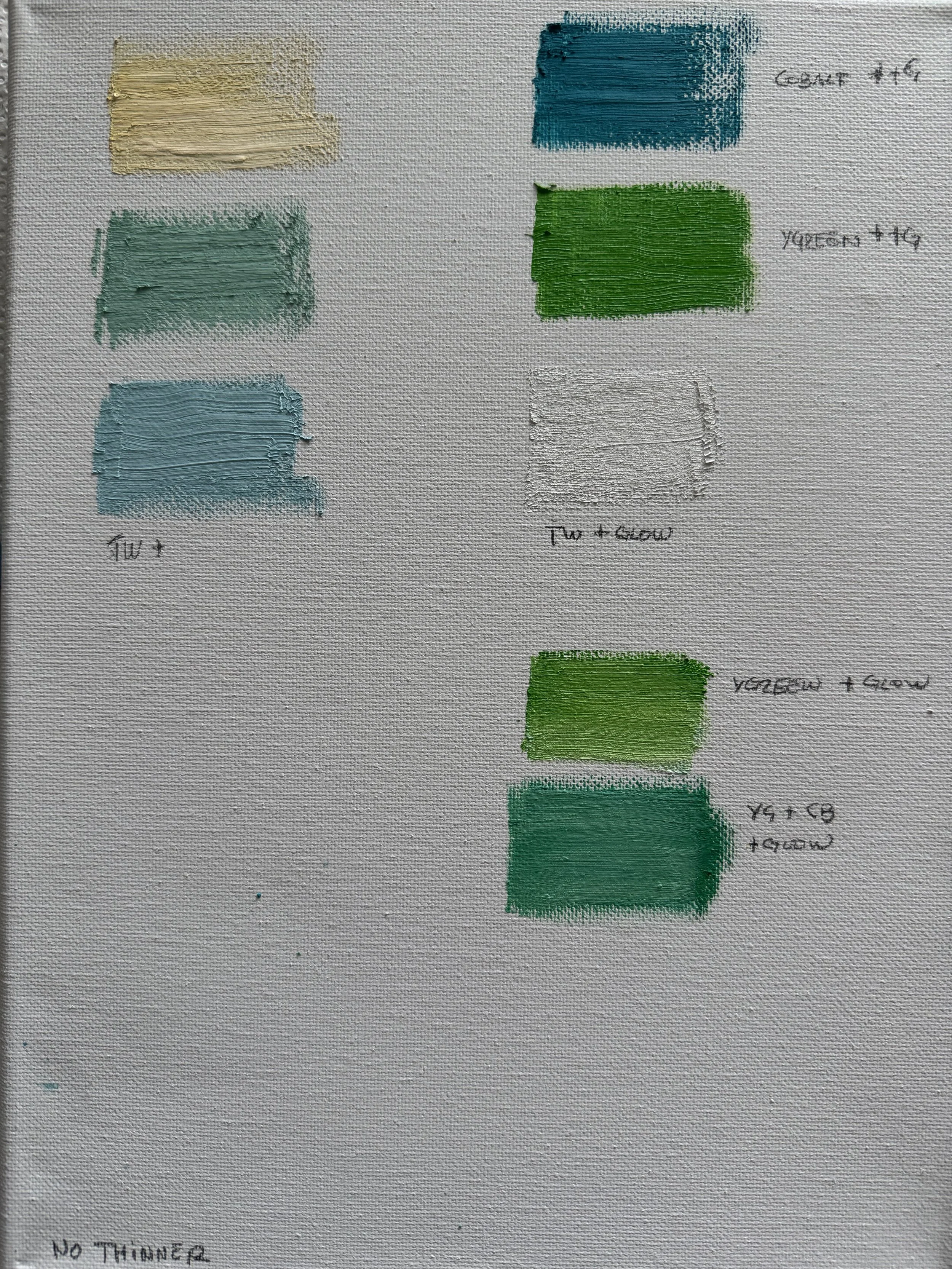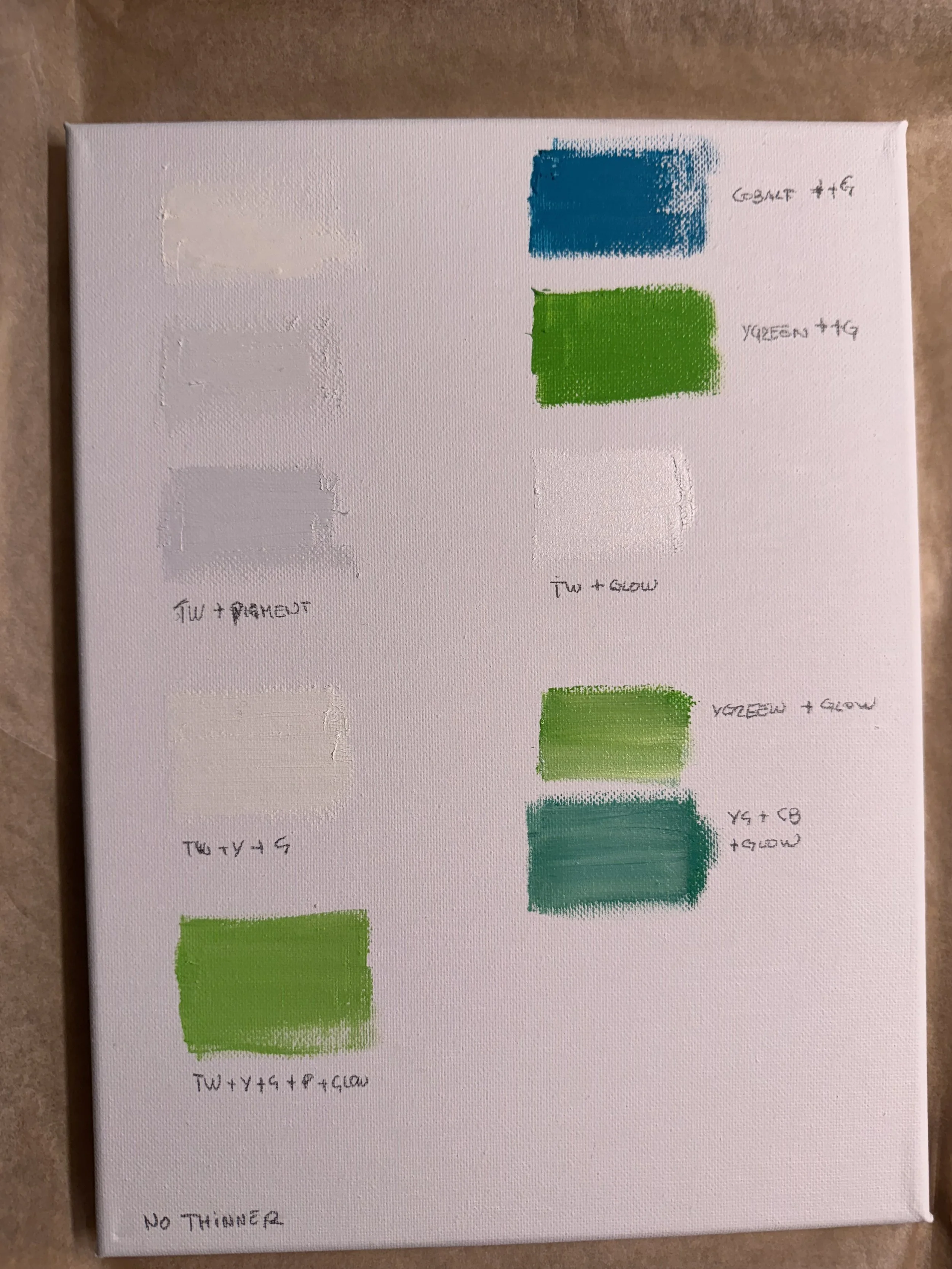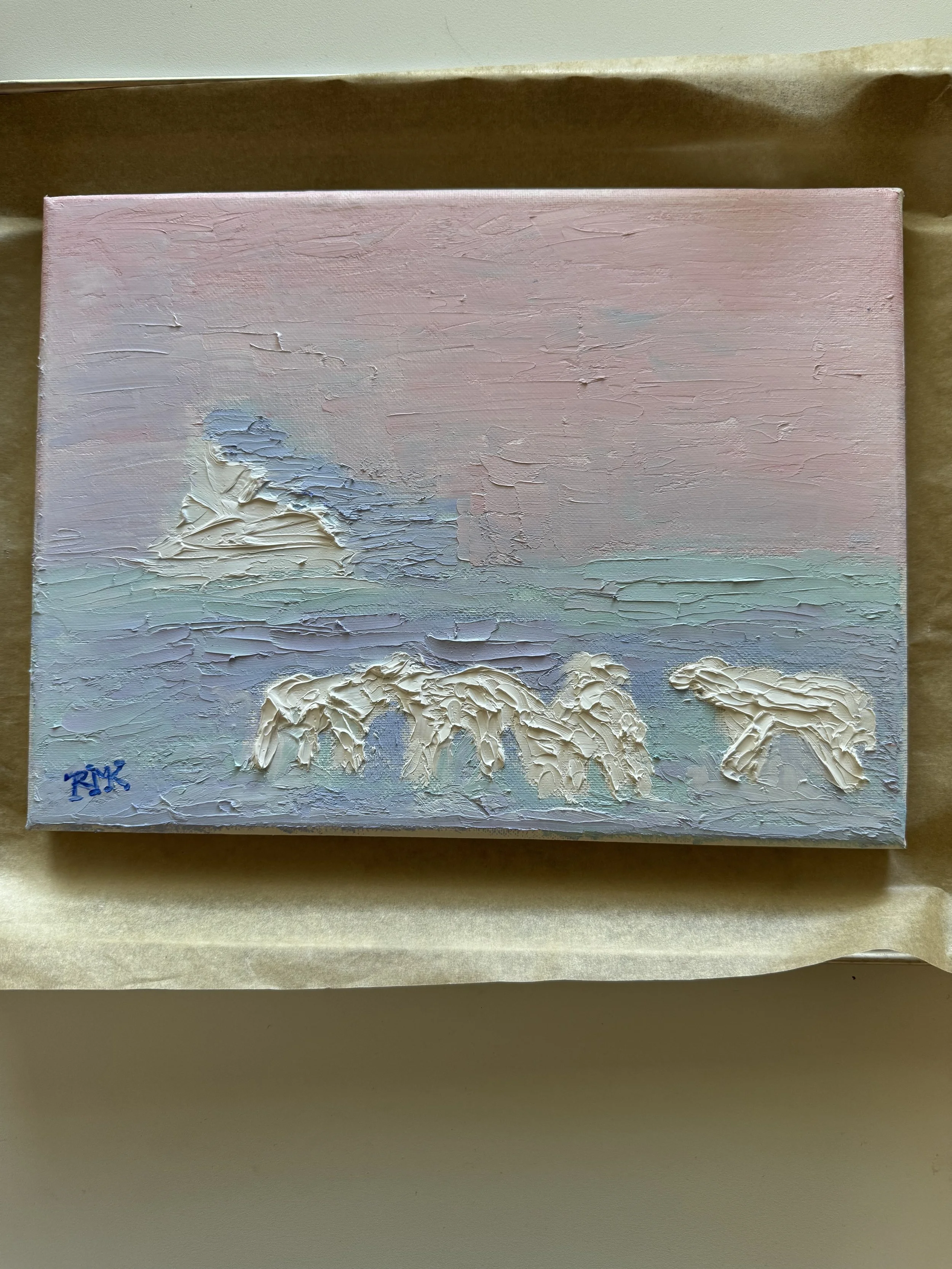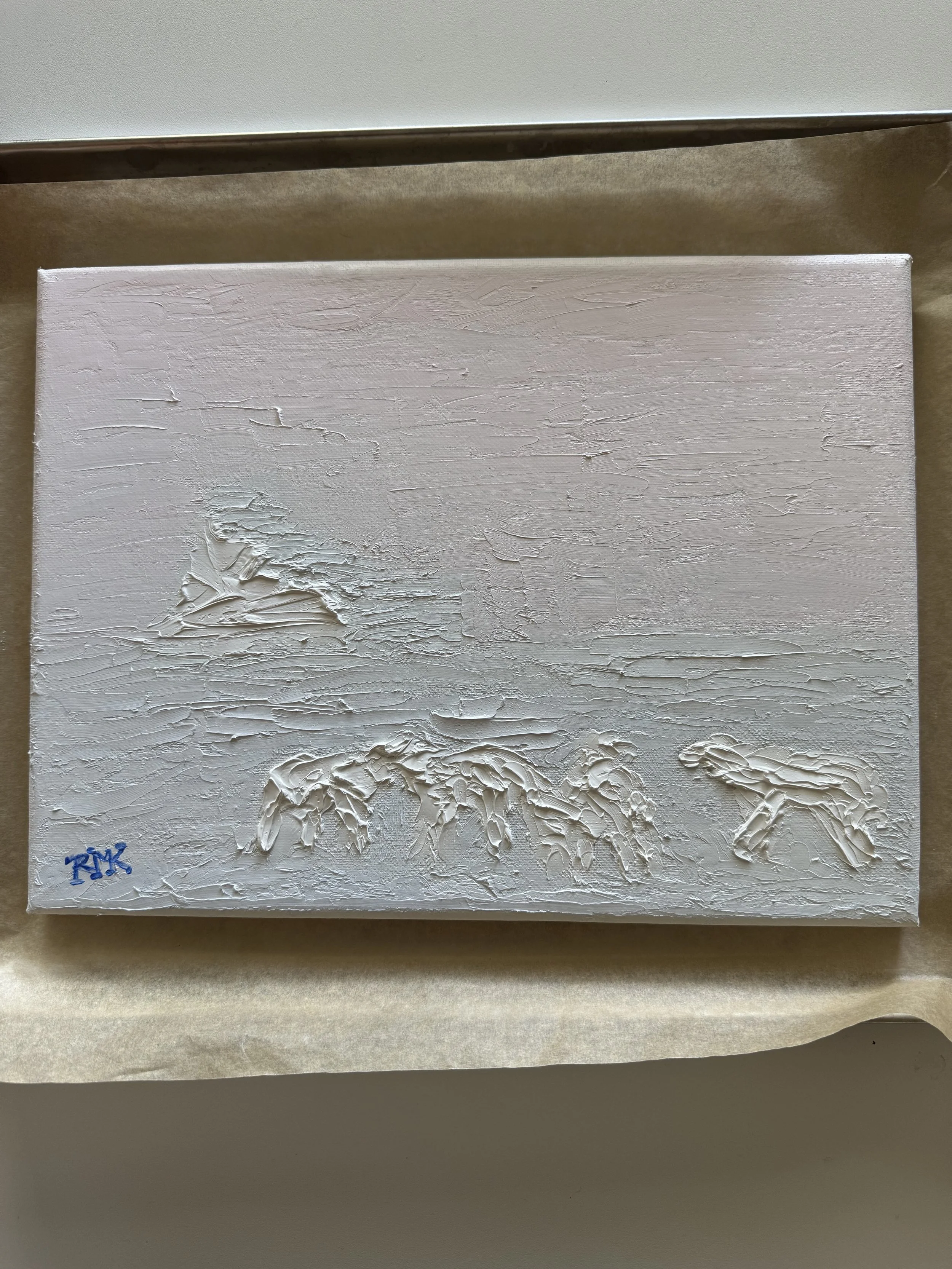Entry Six: Heat and Disappearance
What follows is a confession, an explanation, and a hopeful experiment. It is about how color can live, how it can die, how it can speak of loss.
Thermochromic pigments are the heart of this work. They are materials that change their optical properties in response to temperature, sometimes shifting color, sometimes fading to transparency, then returning again as they cool.
Most of these pigments are made up of microscopic capsules (microcapsules) that contain dye, a weak acid (or developer), and a solvent. Below a certain activation temperature, the dye-acid complex is stable and visible. Above it, the solvent melts, the internal chemical balance shifts, and the dye turns transparent. For my work, that threshold sits at around 88°F (31°C), the moment where color yields to heat and image gives way to absence.
Because they are encapsulated, these dyes are protected from many external elements, but that also makes them delicate. Strong shear forces, UV light, harsh solvents, or excessive heat can degrade or break the microcapsules.
In practice, here is what I will do with the paintings:
The pigment will be applied in carefully controlled layers, tuned to an activation temperature of around 88°F (31°C), the point where color gives way to heat and image begins to fade. Each painting will then be framed in a heated frame, which holds a controlled, gentle warmth so that parts of the image slowly disappear or reappear depending on ambient temperature, sunlight, or even the closeness of the viewer.
The frame is not merely a boundary; it is part of the work. It becomes an interface. It watches the world, it responds. It is a small climate machine. More about the frame in a future blog.
Watch the entire Pigment Test
Why do this? Because I want color to vanish the way ice vanishes. Because I want viewers to feel not just the idea of loss, but its material presence: the way something you once saw recedes bit by bit. Because the Arctic is doing this now, not in a heroic flash, but in a quiet disappearance, in thin layers, in places that were white becoming blue, becoming water.
I imagine a gallery where someone stands in front of one of these paintings and turns a small dial to raise the temperature. Slowly, before their eyes, the image begins to fade. What was visible moments ago becomes ghostlike, then gone. For a few seconds, they experience what billions never see: the moment of melting, the slow undoing that happens out of sight, far from the warmth of their own lives. And as the piece cools, the color returns, fragile but still alive, reminding us that change is not only an ending, but a chance to begin again.
That is the feeling I want to leave behind: a small act of empathy, a moment when absence becomes visible, when the invisible cost of warmth reveals itself in silence and light.
“Color fades, but feeling remains.”

